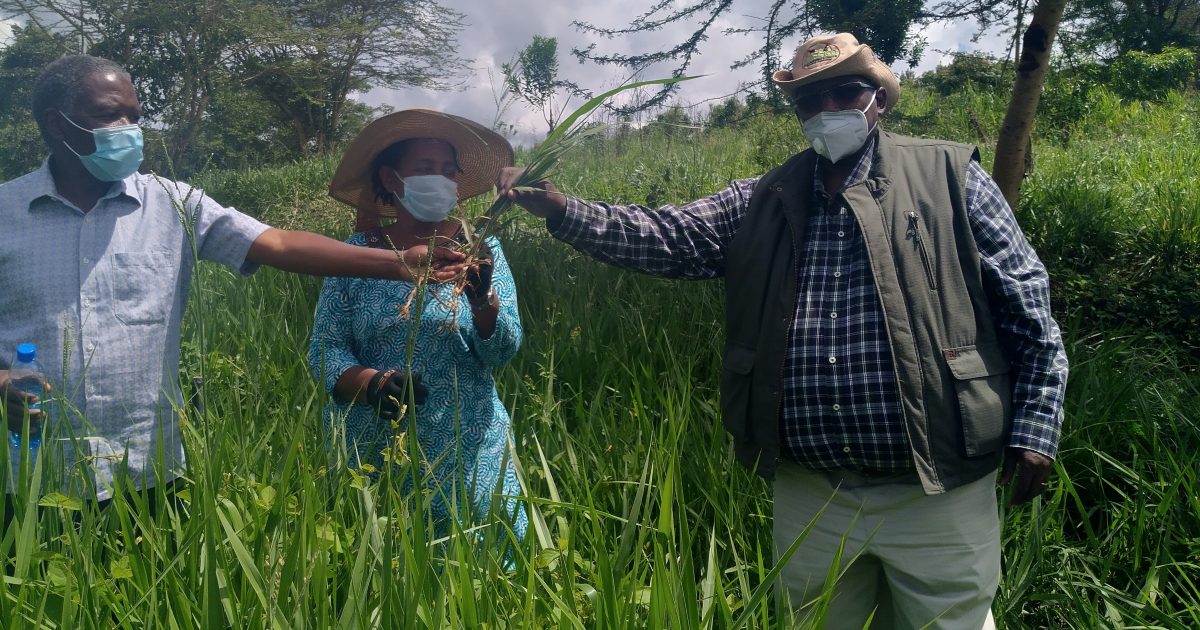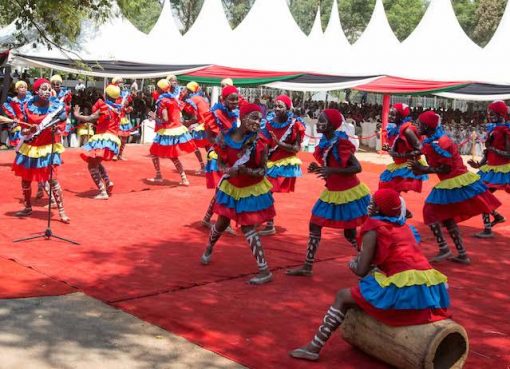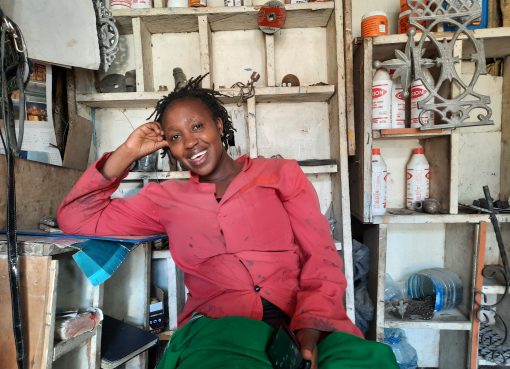Kenya Agricultural and Livestock Research Organisation (KALRO) has released four varieties of fodder grass expected to lower the cost of feeding livestock and increase milk production
The registered four (4) Brachiaria, (Urochloa) grass cultivars for commercialization namely Toledo, Piata, MG-4 and Basilisk have the potential to revolutionize the livestock industry by improving availability of high-quality feed, increase livestock productivity and also improve farmers’ income and livelihoods.
KALRO Director General, Dr. Eliud Kireger says that the new grass cultivars will see milk production increase by between 15 per cent and 40 per cent annually due to its protein content.
Livestock plays an important role in Kenya’s national economy with a direct contribution of around 12 percent of the Gross Domestic product(GDP).
Speaking during the official launch of the grasses at Richard Makau’s farm in Kangundo, Machakos Monday this week, Dr. Kireger explained that seasonal scarcity and low quality feed resources is one of the major challenges for livestock farmers in improving productivity.
He noted that lack of suitable forage options that are better adapted and resilient to climate change, recurrent drought and emerging pest and diseases contribute to low productivity thus impeding the country from meeting current and future demand for livestock products

Currently dairy farmers experience almost 60 percent cost of production in feeds but with the new grass the DG said the cost of production for farmers can reduce by 30 percent.
“Rigorous research to develop the new varieties started 10 years ago by a team of scientists from KALRO, The National Variety Release Committee (NVRC) granted the registration of four cultivars with Kenya Agricultural and Livestock Research Organization (KALRO) as licensee owner on April 9, 2021 paving way for increased availability of seeds to livestock farmers in Kenya,” said Dr. Kireger.
Dr. Kireger said that already close to 80,000 farmers have received planting materials and with the experience seen so far indicating that livestock productivity can go up to 18 percent compared to about 8 percent of Napier or Boma Rhodes grass meaning thus more income for farmers.The DG gave an example of Brazil which has been planting Brachiaria grass in over 120 million hectares contributing to making the country the leading beef exporter in the world.
“Although Kenya is one of the centres of origin and diversity of Brachiaria grasses in Eastern and Central Africa their contribution to livestock productivity has been negligible because of limited selection of suitable species for cultivation”, he said.
Dr. Kireger further explained that the introduction of highly nutritious feeds is part of the Government strategy to increase milk production to 12 billion litres by 2030 from the current production of slightly above 5 billion litres.
Mr. Richard Makau who started dairy farming in 2013 said with the biggest challenge being feeds, and also dealing with drought in the area, he set out a little space to grow rice for the cows.
“I have seen results with the brachiaria grass as the cows are down well. I had started planting other varieties but discovered that brachiaria even with a small acreage I can get huge volumes necessary for feeding my cows”, he said
Makau since he started feeding his cows with brachiaria grass, he has increased slightly in terms of milk production and moved from the initial 10 litres per cow to now 20 litres per cow.
Dr. Donald Njarui, from KALRO and the Principal Investigator behind the technology said the field evaluations shows the grass is fast growing, highly palatable drought tolerant and pest and disease resistant.
He added that the Brachiaria grass is native to Kenya which has around 33 species but worldwide there are over 100 species and is naormaly climate smart as it is able to mitigate the three major green ghouse gases .
“I advise farmers that it takes 3 to 4 months for the roots to fully establish since it’s a civil plant”, he said adding that in comparison to the Napier grass that has been grown for many years and is susceptible to diseases, brachiaria which is widely used in Brazil can be harvested up to 30 years .
Dr. Njarui said KALRO is exploring ways to produce the seeds but currently the farmers are using the splits. We are exploring ways to produce the seeds we may have to outsource but farmers are exploring, planting using the splits’.
“This Brachiaria grass is an excellent alternative grass in the dairy enterprise as it leads to instant milk increase, it is less hairy and less stemmy, it can be grazed directly by livestock or baled into hay in comparison to Napier grass whose disease challenges are also being experienced currently”, he said.
Director Livestock Production, Machakos County Simon Mwangangi said that farmers taking up research innovations from KALRO is a big boost and a show of confidence in adopting technology.

He said that the technology will assist farmers in the dairy industry to increase production of milk considering that a big percentage of the cost of milk production comes from feed.
“As a county, collaborating with KALRO is a big boost for us and also bridge the gap in terms of feeds ”, he said adding that the demand for hay bales per year is almost a million and the county is only able to produce 600,000
Mwangangi further added that Milk demand for Machakos County is at 102 million per year and they are only producing 60. Million litres and this technology will therefore address the deficit.” The issue of nutrition to our livestock is paramount, he said.
The 10-year research was carried out by scientists from KALRO, in collaboration with Biosciences eastern and central Africa -International Livestock Research Institute (BecA-ILRI) Hub, supported by the Swedish International Development Cooperation Agency (Sida), and USAID
Field evaluations of the grasses were conducted in four regions with distinct agro-ecological zones covering coastal lowlands (Kwale and Kilifi Counties), mid-altitude eastern region (Machakos and Makueni), central highlands (Nyandarua and Embu) and western region (Trans-Nzoia, Uasin Gishu, Elgeyo Marakwet and Busia).
By Wangari Ndirangu




